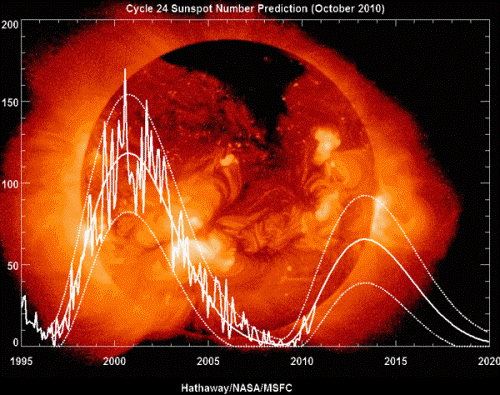 Tonight’s the first annular solar eclipse of 2014 (April 28-29), but almost nobody will be able to see it. The ring of fire will be visible only from the uninhabited region of Wilkes Land in Antarctica, the southern edge of Indonesia, and the South Indian Ocean. Australians will experience a partial solar eclipse, as may the watery grave of Malaysia Airways flight MH370.
Tonight’s the first annular solar eclipse of 2014 (April 28-29), but almost nobody will be able to see it. The ring of fire will be visible only from the uninhabited region of Wilkes Land in Antarctica, the southern edge of Indonesia, and the South Indian Ocean. Australians will experience a partial solar eclipse, as may the watery grave of Malaysia Airways flight MH370.
During a total eclipse of the sun, the dark new moon appears to completely obscure our Sol. It’s amazing that this happens, actually, when you consider that the sun is fully 400 times greater in diameter than our little Moon. However, taking into account slightly elliptical orbits, Moon is about 400 times closer to the Sun than Earth. The result of the confluence: the Sun seems to disappear.
Solar eclipses totality only last about seven minutes, at the outside, but the phenomena are visually stunning. Joe Rao of space.com tells what most of us will be missing:
“During a total solar eclipse, the moon casts its umbra upon Earth’s surface; that shadow can sweep a third of the way around the Earth in just a few hours. Those who are fortunate enough to be positioned in the direct path of the umbra will see the sun’s disk diminish into a crescent as the moon’s dark shadow rushes toward them across the landscape. During the brief period of totality, when the sun is completely covered, the beautiful corona – the tenuous outer atmosphere of the sun – is revealed.”
On the figure above (from NASA’s eclipse website) you can see that the entire zone of annularity appears as a small D-shaped region in eastern Antarctica. As a non-central annular eclipse (one in which the central axis of the moon’s antumbral shadow misses Earth entirely; only the shadow edge grazes the planet), this type of astronomical event is very rare.
Total annular solar eclipse usually occurs at least twice a year, and can happen up to five times. During a solar eclipse I witnessed one summer afternoon, I saw the shadow cast by leaves above project thousands of tiny partial eclipses on the ground through the gaps between the shadowy leaves. Spooky wonderful.

